Three weeks into the NFL season, it’s fair to say that we’ve already suffered through plenty of unwatchable dreck. The league’s bad offenses have been really bad. Fifteen teams are putting up fewer than 20 points per game. Seventeen teams—more than half of the league—are averaging a three-and-out at least once every four possessions, after only five teams finished the 2016 season with a rate that high. The Giants, Bengals, and Panthers have combined to score nine total touchdowns.
Plodding starts by so many offenses have made the league’s best units seem all the more exceptional. And so far, many of the teams marching up and down the field have fit a certain theme. The two teams sitting atop Football Outsiders’ (admittedly small sample size) offensive DVOA rankings are the Chiefs and Titans. Both feature elements of traditionally successful units: Tennessee’s Marcus Mariota was the second overall pick in the 2015 draft and looks like the league’s next great quarterback, while Kansas City rookie running back Kareem Hunt has shredded defenses for three straight weeks. And unlike so many groups around the league, their offensive lines have top-tier talent that’s been expertly developed.
Looking at both rosters, though, there’s a common thread each lacks. When we think of great offenses in the NFL, superhuman receivers are typically part of the equation. The Falcons took a blowtorch to opposing defenses last fall in part because of their well-designed scheme, but also because they have an otherworldly talent in Julio Jones. The Steelers have finished in the top seven in offensive DVOA in each of the past three years thanks largely to Antonio Brown racking up numbers that don’t even make sense. But if you scour the depth charts for both Kansas City and Tennessee, there’s no one in that mold to be found. Corey Davis—the rookie wideout who the Titans selected fifth overall in this spring’s draft—may ascend to that level someday. Still, as the Titans hung 33 points on the Seahawks in a Week 3 win, Davis nursed a hamstring injury on the sideline.
The Patriots have a similar model. New England, which ranks second in the league at 33 points per game and fifth in offensive DVOA, has boasted a nontraditional approach for years. Ever since Randy Moss left town in 2010, the Patriots have built their offense around a varied collection of playmakers, the brilliance of Tom Brady, and the creativity of coordinator Josh McDaniels. They’ve shown a keen understanding of how to deploy their personnel in advantageous ways. This season, the Titans and Chiefs are piling up points by doing the same.
Several of the league’s best teams through three weeks have demonstrated a clear grasp of how to fully embrace an unconventional offensive identity in the absence of a tried-and-true no. 1 receiver. And one of the NFL’s early disappointments has struggled by failing to get to a similar point.
Kansas City boils the concept of winning through ingenuity down to its purest distillation and injects it straight into your eyeballs. The architect of its offense is a 59-year-old head coach who’s been in the NFL for a quarter century and yet has helped the Chiefs blossom into one of the league’s most innovative teams. It’s no secret that a group with Alex Smith at quarterback and the speedy-but-small Tyreek Hill leading the receiving corps is going to have inherent limitations. But by way of design, Andy Reid and offensive coordinator Matt Nagy have been able to make Kansas City’s roster quirks matter significantly less than they otherwise would.
Hunt may have emerged as the most productive option among the Chiefs’ skill-position players, but Hill is the one who Reid utilizes in the widest variety of ways. Kansas City uses jet motion or fake handoffs to Hill as a means of creating a bright, shiny distraction that helps the rest of its offense excel. By sending Hill streaking across the formation, the Chiefs are able to divert a defense’s attention without sacrificing blockers in the box. But this only works if Hill consistently gets the ball all over the field, and the Chiefs make that happen plenty. On top of his role reeling in deep passes, Hill gets his touches by way of handoffs, jet sweeps, hitch screens, and other quick plays that never feel like gimmicks. There’s no “package” for Hill; everything designed for him fits within the natural flow of the Kansas City offense, which is why using him as a decoy works so well.
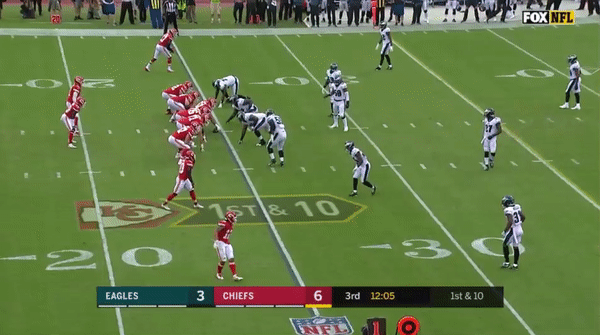
There are levels to the innovation in Reid’s offense, none higher than Travis Kelce’s touchdown in a 27-20 win over the Eagles in Week 2. The league’s best play-callers use certain formations and movements early in the game to set up specific plays later on, and Kelce’s shovel-pass snag is an example of how that can work to devastating effect. The Chiefs lined up in a nearly identical formation to the one they used on the de facto jet sweep above, and Hill followed the same motion across the formation. What came next is a work of art. After faking a handoff to De’Anthony Thomas, Smith pulls the ball back and flips a simple shovel pass to Kelce moving inside. By sending Hill sprinting to the right and feigning a handoff, the Chiefs are able to freeze Malcolm Jenkins and the Philadelphia linebackers in place for just long enough to allow Kelce to slip through the middle for a score.
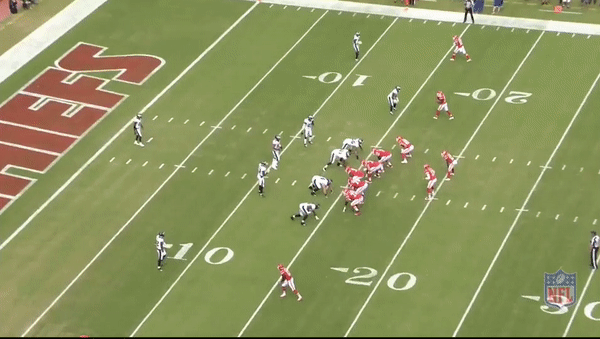
Having a tight end of Kelce’s caliber helps an offense compensate for not having a traditional no. 1 receiver. The 27-year-old caught 85 passes for 1,125 yards last season, and with 14 catches in the Chiefs’ first three games, he seems likely to approach those numbers again this fall. In New England, Rob Gronkowski gives the Patriots the same type of boost. When healthy, Gronk has been the no. 1 option in the Pats’ passing game, and his presence alone lends this group a different feel than other offenses around the NFL.
Gronk’s influence is far from the only element that sets the Patriots apart, though. McDaniels is a master of experimenting with player placement, especially in traditional formations, as a method of manipulating a defense. On the below play from the first quarter of New England’s 36-20 win over the Saints in Week 2, the Pats take the field with James Develin and Gronkowski in the huddle. Solely based on the players involved, this should be 12 personnel—a run-centric formation with two tight ends and a back. Instead, Develin lines up wide right, running back Rex Burkhead motions to the slot, and by the time the ball is snapped New England’s run-heavy look has morphed into an empty backfield. When New Orleans linebacker Alex Anzalone follows Burkhead out of the backfield, Brady knows he has man coverage; from there, scoring is just too easy.
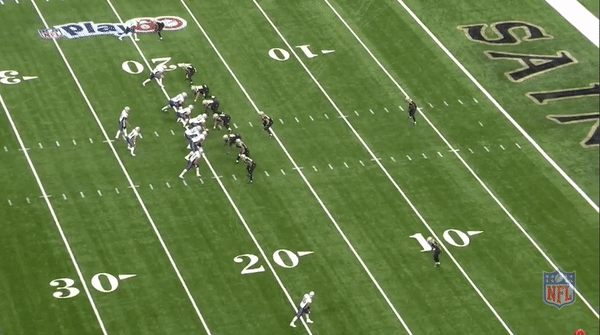
Part of what makes New England so terrifying is the interchangeability of its pieces, particularly at running back. Burkhead and James White are often asked to play roles as wide receivers, thereby giving the unit an air of unpredictability. The play-action, throwback screen pass below, from the second quarter of the Pats’ win over the Saints, comes out of a formation identical to the one New England used in the first quarter with Burkhead at running back. The Pats have certain tendencies based on personnel (Mike Gillislee is the primary ball carrier in obvious run situations), but this offense is flexible enough to constantly keep teams off balance.
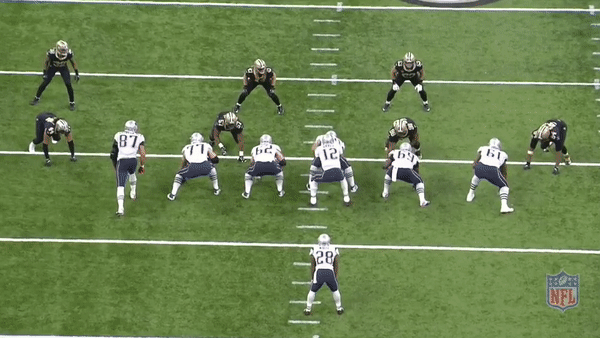
No offense has kept opponents guessing more than the Titans through three weeks, though. Following all of the moves that its front office made this offseason, Tennessee now features a stable of pass catchers that is ridiculously deep. Rishard Matthews is among the more underrated receivers in the league; this fall, he’s playing alongside Eric Decker, Davis, third-round pick Taywan Taylor, and tight ends Delanie Walker and Jonnu Smith. It already looks like Matthews and Davis will each be good for one holy shit catch per game, but what’s made this offense so effective is that it doesn’t need acrobatic catches to get into the end zone.
Among all of the additions Tennessee made to its group of pass catchers, drafting Smith 100th overall in April was the least celebrated. The 6-foot-3 248-pounder out of Florida International wrecked the combine by running a 4.62-second 40-yard dash and posting an absurd 38-inch vertical leap. He still fell to the third round, and all he’s done in his first three games is haul in two long touchdown passes.
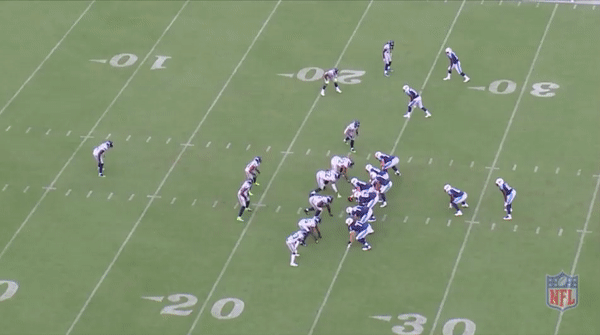
Smith’s third-quarter touchdown catch against the Seahawks is a prime example of how a team can generate explosive gains by deploying dynamic players creatively out of what appear to be traditional alignments. By lining Smith up as a fullback, Tennessee was able to leak him out of the backfield, execute a play fake, and get into the end zone. The idea was similar to the play that Smith scored on a week earlier in a 37-16 win over the Jaguars, when a late-developing screen allowed him to scamper down the sideline behind a convoy of Titans. That one worked so well that Tennessee’s offensive linemen actually ran out of guys to block. Watch that clip below; it’ll take at least three replays to figure out where the heck Smith comes from.
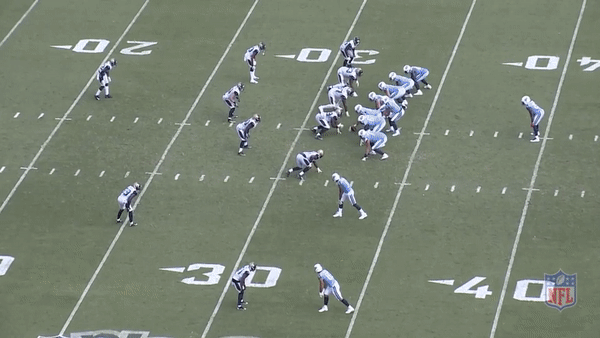
The Titans often have leaned on screen passes to receivers other than running backs early in this season, and they’re far from alone. Hitch screens to outside receivers have been a staple of NFL offenses in 2017 as teams try to get the ball to playmakers on the perimeter with blocking help in front. Tennessee hit a long touchdown on one such play to Rishard Matthews against Seattle. It offered a reminder that clever play design can work wonders—but only if run correctly.
Like the Titans, Chiefs, and Patriots, the Panthers also feature an offense that lacks a traditional top-end wide receiver. That’s only been made more apparent with Greg Olsen heading to IR and Kelvin Benjamin having to exit last week’s 34-13 loss to the Saints with a knee injury. When Carolina took Christian McCaffrey and Curtis Samuel in the first two rounds of the 2017 draft, it seemed to signal that the team would implement new wrinkles in its passing attack. So far, though, it’s struggled through the air.
The Panthers’ problems are rooted in a couple of different areas. The play below is a hitch screen, similar to the one the Titans scored on against the Seahawks, but with two key differences. Offensive coordinator Mike Shula wants to get the ball in Samuel’s hands quickly on the outside, but without a play fake to the right side, the Saints defense is free to flow directly to the ball. And it doesn’t help that wide receiver Russell Shepard misses his block, sabotaging the play before it even gets going. These sorts of tiny failures have been a constant for Carolina during its plodding start. Shula’s challenge entering the fall was seamlessly incorporating McCaffrey and Samuel into the passing game; to this point, that transition has proved bumpy.
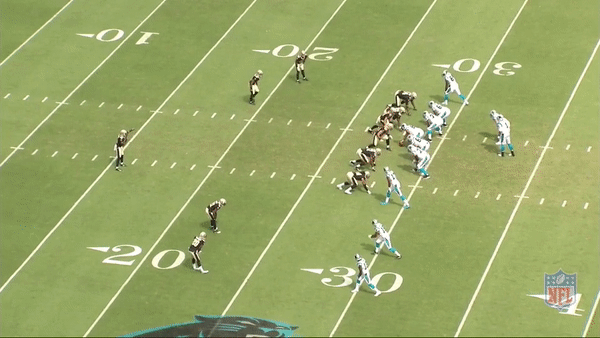
McCaffrey has already become the focal point of the Panthers’ air attack with Olsen on the shelf, but he’s best in the areas of the field that are still foreign territory to Cam Newton. For years, the creativity of Carolina’s passing scheme lagged behind its ground game; Newton was asked to sit in shotgun and fire tough throws into tight windows for receivers who couldn’t create much separation. Newton’s job should be easier with McCaffrey creating mismatches on short and intermediate routes, but those throws aren’t the most polished part of Newton’s skill set. As one of his interceptions against the Saints showed, the quarterback doesn’t look comfortable.
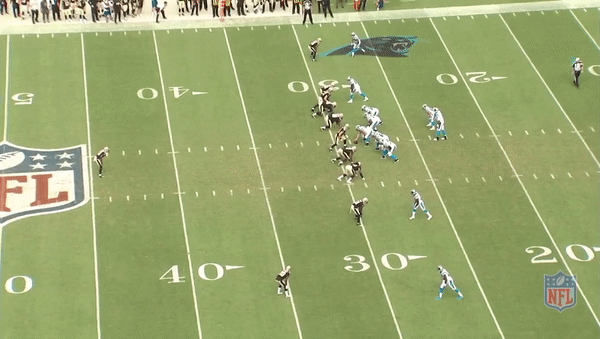
In Carolina, the use of McCaffrey (and the limited use of Samuel, upon whom the Panthers will likely bestow of a larger role out of necessity) doesn’t feel like a natural progression of the offense. This group is force-feeding its newest asset, whereas the units in Kansas City, New England, and Tennessee have built their schemes around their potent but unconventional collection of playmakers. Deploying a variety of pass catchers in an offense that’s tough to predict looks like a way of life for the Chiefs, Pats, and Titans. This is who they are. The Panthers have yet to display much comfort with that identity, and along with some rust from Newton, that may be the primary reason their offense has stalled.